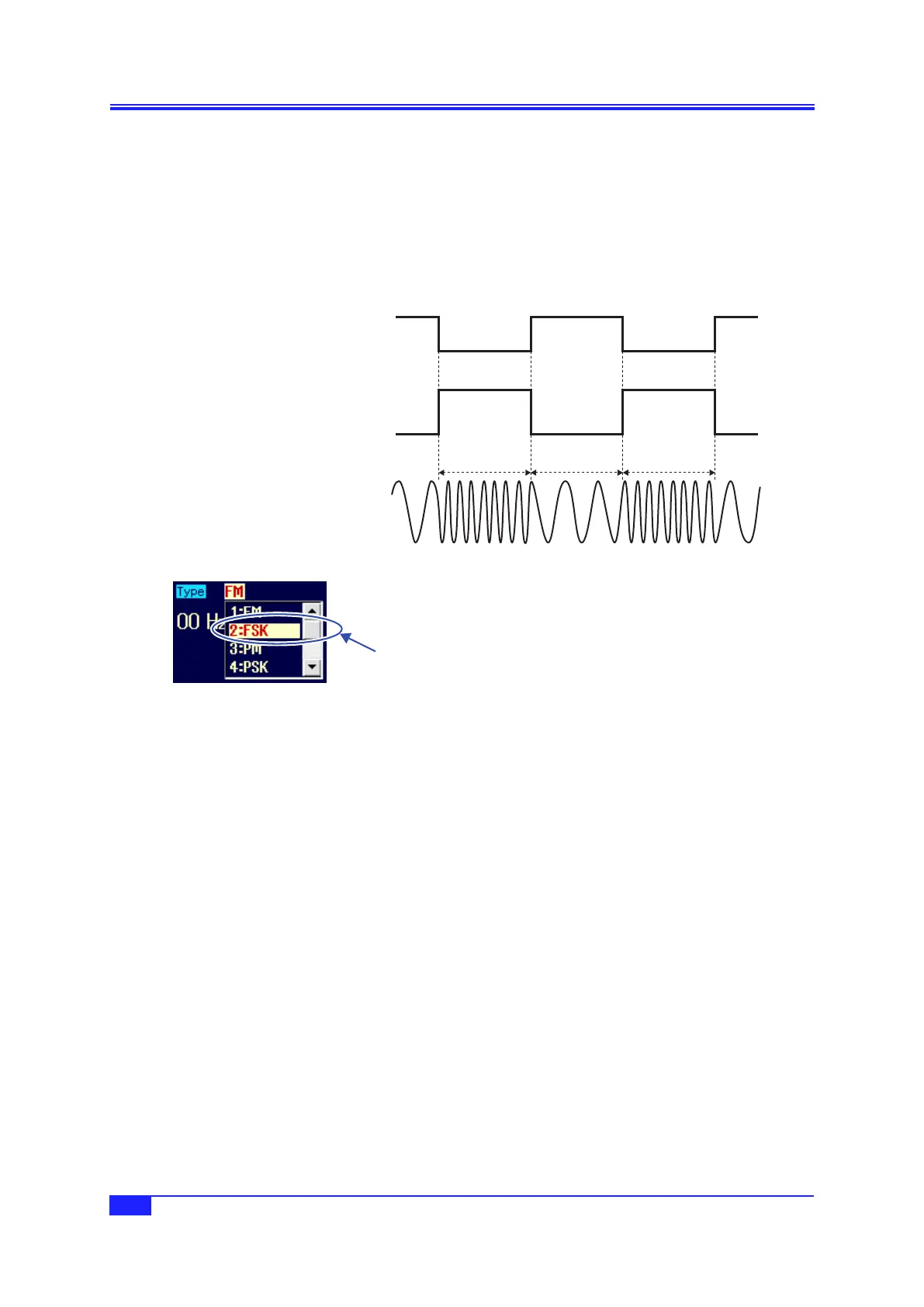80
IM FG410-01EN
4. BASIC OPERATION
4.7.5 SettingFSK
This is binary frequency shift modulation by which the output frequency switches between the carrier
frequency and hop frequency according to the modulation signal.
For the manipulation methods that are common with the modulation setting screen, refer to p.74
and p.76 .
a) FSKexample
The frequency changes suddenly, but the phase continuity of the output signal is maintained.
Hop
frequency
Carrier
frequency
Modulation sync signal
(during internal modulation)
Output signal
Modulation signal
(during external modulation,
positive polarity)
Hop
frequency
b) SelectingFSK
When [Mode] (oscillation mode) is set
to [Modulation] (modulation), set [Type]
(modulation type) on the 2nd page of
the setting screen to [FSK] (FSK).
c) WaveformsforwhichFSKisnotpossible
FSK is not possible for noise, pulse wave, and DC.
d) SettingitemsrequiredforFSK
Set [Freq] (carrier frequency) on the 1st page of the setting screen.
Set [HopFreq] (hop frequency) on the 2nd page of the setting screen.
The output frequency alternates between the carrier frequency and the hop frequency.
If [Source] (modulation source) is [Int] (internal), set [ModFreq] (modulation frequency).
If [Source] (modulation source) is [Ext] (external), set the trigger polarity and input the modulation
signal (TTL level) to the external trigger input terminal. If the polarity is set to [High] (positive), the
carrier frequency is output during low-level input, and the hop frequency is output during high-level
input, and vice versa if the polarity is set to [Low].
Select [FSK] in
[Type] and then
press the ENTER
key.

